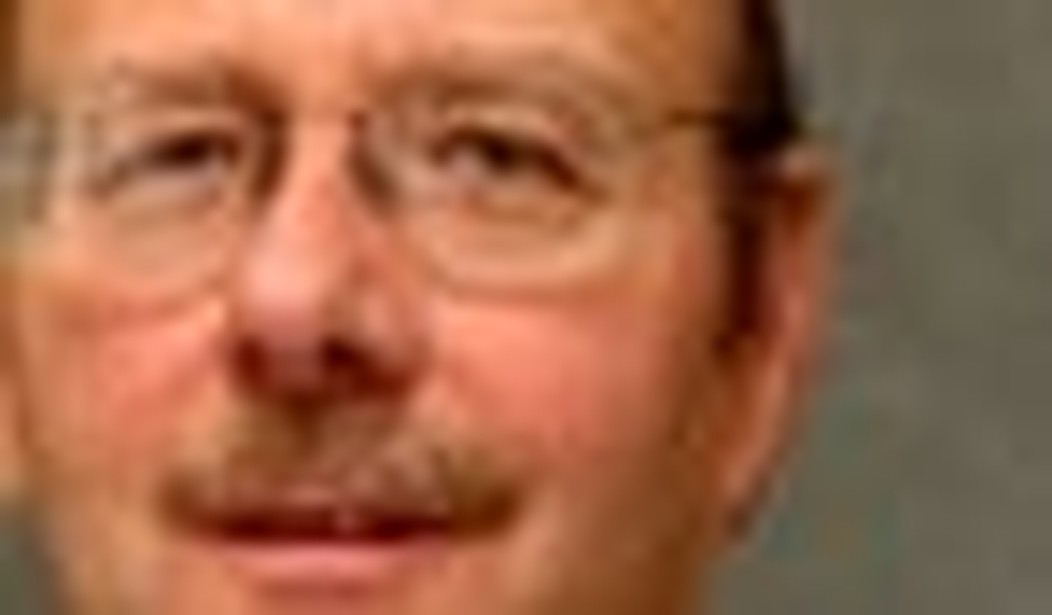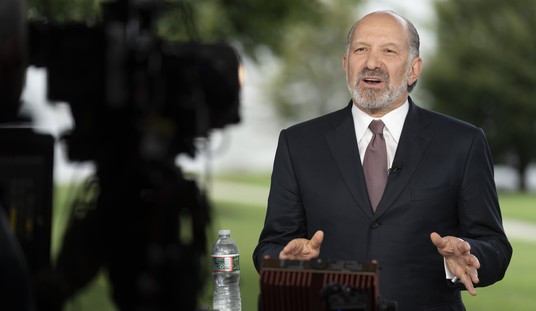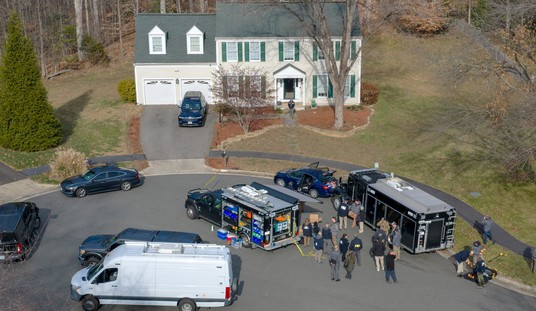Professor Roger Pielke Sr. is mentioned often in the Climategate data dump emails — generally unkindly. Professor Pielke is an atmospheric scientist at CIRES at the University of Colorado at Boulder, a professor emeritus at Colorado State University, a former Colorado State climatologist, and an active critic of the IPCC process. (A more detailed biography is appended below.)
In a Pajamas Media exclusive, Dr. Pielke kindly agreed to an email interview regarding his reaction to the CRU emails and his opinion of their implications.
PJM: The release of the purloined emails and files from the UEA Climatic Research Unit has been a shock that still reverberates in the world of climate science, and among the critics of the current state of climate science. On the one hand, it has led some people to denounce “global warming” as a “hoax”; on the other, RealClimate.org apparently dismisses it as a tempest in a teacup. In your opinion, how important are these revelations?
Pielke: Both those who denounce “global warming” as a hoax and RealClimate’s claim that this is a “tempest in a teapot” are incorrect. With respect to the role of humans in the climate system, there is incontrovertible evidence that we exert both warming and cooling effects. The warming occurs through the emission of carbon dioxide and other greenhouse gases and certain aerosols, and cooling [occurs due to] other types of aerosols. Land use change due to human land management also effects warming and cooling forcings.
With respect to the RealClimate dismissal of the emails, however, there are serious issues exposed by the emails — including the goal of these scientists to prevent proper scientific disclosure of their data, as well as to control what papers appear in the peer reviewed literature and climate assessments. The IPCC assessment, with which major policy decisions are being made, involves the individuals in the emails who have senior leadership positions.
PJM: Do you feel these revelations suggest scientific misconduct on anyone’s part?
Pielke: I will defer to independent assessment of this particular episode. However, it is very important to realize that this is just a sample of what is a much broader goal of the leadership of the IPCC process to control what science the policymakers receive.
PJM: The CRU has now announced its intention to make all data freely available; at the same time, they announced that much of their raw data had been deleted/destroyed. Is the “value-added” data set useful? How much of a loss was the destruction of the original data? Can the original data be recovered, say, by returning to original source documents?
Pielke: The “value-added” terminology just means that they have adjusted the data based on a number of effects, each of which involves statistical uncertainty and bias. It certainly should be possible to return to the original data and recreate (and add photographs of the observing sites). However, the original data should also be at NCDC and GISS, so these sources of this information should be sought as well.
The photographs are essential, however, in order to determine if the locations where the temperatures are being observed are well-sited. Anthony Watts has documented that this is a major concern in the U.S. (Watts, A. 2009: Is the U.S. Surface Temperature Record Reliable? 28 pages, March 2009 The Heartland Institute), and this also appears to be true elsewhere in the world.
PJM: Do these revelations call the utility of the peer review system into question? Is it, as some have suggested, the worst method except for all the others? What changes could be made to improve peer review?
Pielke: This episode shows there are problems with the peer review process when editors (who are “judges”) introduce their own biases in the review process with their selection of referees and with their decisions. One suggested improvement is to publish the reviews and papers (at least electronically) of all rejected papers and reviews of all accepted papers.
PJM: Anyone who has followed your blog for some years knows that you have had your own issues with the people included in the “Jones-Mann-Wigley clique.” Do you feel some degree of vindication now?
Pielke: Of course, it is always pleasant to have documentation that these individuals are inappropriately using their senior positions to prejudice the scientific assessment and publication process, as I have reported on my weblog for several years. What is more important, however, is that the significance of this breach of the scientific method be recognized by the policymakers and other scientific colleagues who have requested climate assessments.
PJM: George Monbiot has suggested that Dr. Jones should resign his position, and several people (ex. Hans von Storch, Eduardo Zorita) have suggested that Dr. Jones, Dr. Michael Mann, and others should be removed from the IPCC and excluded from the peer review process in the future. Indeed, Dr. Michael Hulme has suggested that the IPCC itself be abandoned for structural politicization of science. Do you agree with any or all of these suggestions?
Pielke: I am more concerned with the broader issue in this email exposure, of which these emails are just a small sample.
The IPCC process itself is inadequate, as we report in our new paper (Pielke Sr., R., K. Beven, G. Brasseur, J. Calvert, M. Chahine, R. Dickerson, D. Entekhabi, E. Foufoula-Georgiou, H. Gupta, V. Gupta, W. Krajewski, E. Philip Krider, W. K.M. Lau, J. McDonnell, W. Rossow, J. Schaake, J. Smith, S. Sorooshian, and E. Wood, 2009: Climate change: The need to consider human forcings besides greenhouse gases. Eos, Vol. 90, No. 45, 10 November 2009, 413. An edited version of this paper was published by AGU. Copyright 2009 American Geophysical Union). We report that the IPCC assessment did not consider all perspectives on the role of humans in the climate system.
This supports the viewpoint expressed by Dr. Michael Hulme that you listed in your question. We need a new assessment process.
PJM: Do you think these revelations should cause us to question the case for global warming — that is, for a general rise in average temperature over the last 400 or 1000 years — irrespective of cause?
Pielke: The data is quite convincing that there was warming at many locations around the Earth over the last hundred years. However, it is also convincing that warming has ceased, at least for the time being, since mid-2003.
Our research, however, has shown a warm bias in the surface temperature record over the last several decades, as reported most recently in this paper: Klotzbach, P.J., R.A. Pielke Sr., R.A. Pielke Jr., J.R. Christy, and R.T. McNider, 2009: An alternative explanation for differential temperature trends at the surface and in the lower troposphere. J. Geophys. Res., 114, D21102, doi:10.1029/2009JD011841.
We also document a set of unresolved uncertainties and biases in the surface temperature data in several of our other research papers. For example: Pielke Sr., R.A., C. Davey, D. Niyogi, S. Fall, J. Steinweg-Woods, K. Hubbard, X. Lin, M. Cai, Y.-K. Lim, H. Li, J. Nielsen-Gammon, K. Gallo, R. Hale, R. Mahmood, S. Foster, R.T. McNider, and P. Blanken, 2007: Unresolved issues with the assessment of multi-decadal global land surface temperature trends. J. Geophys. Res., 112, D24S08, doi:10.1029/2006JD008229.
Thus the magnitude of global warming using the surface temperature data trends overstates recent warming.
As a result of the inadequacies of the surface temperature record as a quantitative measure of climate system heat changes, we have been advocating assessing upper ocean heat changes — as reported, for example, in: Pielke Sr., R.A., 2008: A broader view of the role of humans in the climate system. Physics Today, 61, Vol. 11, 54-55.
This data shows no annual averaged global warming since mid-2003.
PJM: The corrections included in the USHCN data appear to dominate the raw data warming by a factor of five to one — 0.5°C to 0.1°C. To an outsider, when the corrections are this large compared to the “signal,” it raises the question of whether the corrections aren’t simply included to make the data fit the dominant theory. How trustworthy is the climate data from USHCN, GISS, and other sources, in your opinion?
Pielke: As we wrote in our 2007 JGR paper, there are major problems with the quantitative accuracy of the surface temperature data. As you correctly summarize, the adjustments are often larger than the trends. While I am very critical of how they made these adjustments, I do not question their sincerity. However, where they have failed is in preventing, in their leadership position, a proper scientific debate of the issues that we and others have raised. It is interesting and quite revealing that NCDC has still not submitted a comment in the literature on our 2007 JGR paper.
They have just chosen to ignore it.
PJM: Do you think these revelations call the notion of anthropogenic global warming into question?
Pielke: This is too simple a question. There really are three fundamental scientific perspectives:
Hypothesis 1: Human influence on climate variability and change is of minimal importance, and natural causes dominate climate variations and changes on all time scales. In coming decades, the human influence will continue to be minimal.
Hypothesis 2a: Although the natural causes of climate variations and changes are undoubtedly important, the human influences are significant and involve a diverse range of first-order climate forcings, including, but not limited to, the human input of carbon dioxide (CO2). Most, if not all, of these human influences on regional and global climate will continue to be of concern during the coming decades.
Hypothesis 2b: Although the natural causes of climate variations and changes are undoubtedly important, the human influences are significant and are dominated by the emissions into the atmosphere of greenhouse gases, the most important of which is CO2. The adverse impact of these gases on regional and global climate constitutes the primary climate issue for the coming decades.
Hypothesis 2b is the perspective that the released emails are advocating (which is the IPCC conclusion) and are deliberately attempting to suppress scientists who present evidence of either of the other two viewpoints. In our EOS article, we present evidence in the peer reviewed literature that refutes both hypotheses 1 and 2b, and supports hypothesis 2a as the robust finding.
PJM: Do you think these revelations weaken the case for the “greenhouse” effect of CO2 and CH4 as the dominant anthropogenic factor [Dr. Pielke’s Hypothesis 2b — PJM] in global warming?
Pielke: The emails do not discuss the three hypotheses that I list in the last answer. However, I have documented elsewhere that the IPCC deliberately excluded peer reviewed papers that presented evidence which refuted hypothesis 2b. (See Pielke Sr., Roger A., 2008: A Broader View of the Role of Humans in the Climate System is Required In the Assessment of Costs and Benefits of Effective Climate Policy. Written Testimony for the Subcommittee on Energy and Air Quality of the Committee on Energy and Commerce Hearing “Climate Change: Costs of Inaction” — Honorable RickBoucher, Chairman. June 26, 2008, Washington, DC., 52 pp.)
PJM: What do you think the scientific consequences should be? Can the results of Mann, Hansen, Jones, et al be trusted, or must they be re-examined and replicated?
Pielke: All of the data analyses on NCDC, GISS, and CRU should be examined by independent assessment groups. This was clear even before the emails were released. However, the emails will hopefully motivate a call to do this.
PJM: How should climate science recover from this scandal?
Pielke: We need new climate assessments by climate scientists who do not have the blatant conflict of interest of the current leadership of the IPCC process and the professional societies.
——————-
Professor Roger A. Pielke, Sr. is a atmospheric scientist who received his Ph.D. from Pennsylvania State University in 1973, and who is now professor emeritus at Colorado State University and senior research scientist at the Cooperative Institute for Research in Environmental Sciences at the University of Colorado at Boulder. Professor Pielke was elected a Fellow of the American Meteorological Society in 1982, was elected a Fellow of the American Geophysical Union in 2004, and served as Colorado State climatologist from 1999 to 2006. Professor Pielke is an ISI highly cited researcher, which means that he is among the researchers whose publications have been most cited by others in his field.










Join the conversation as a VIP Member